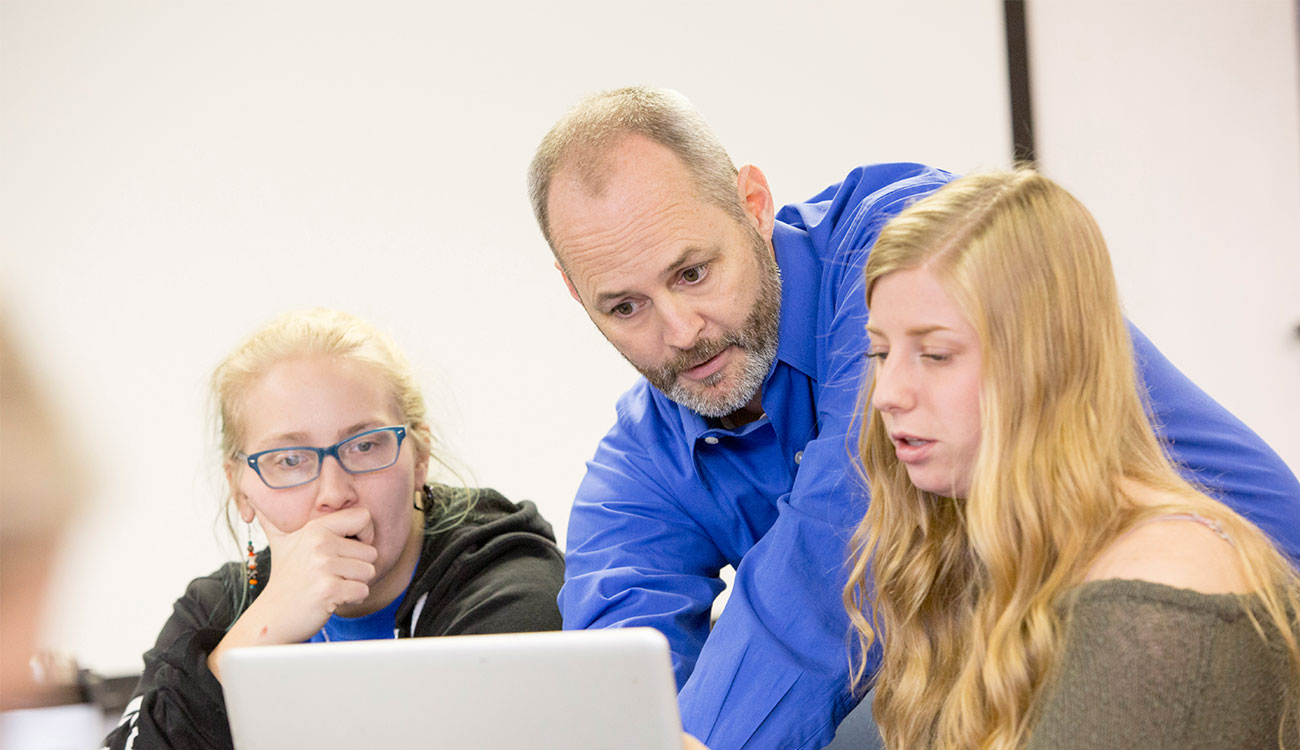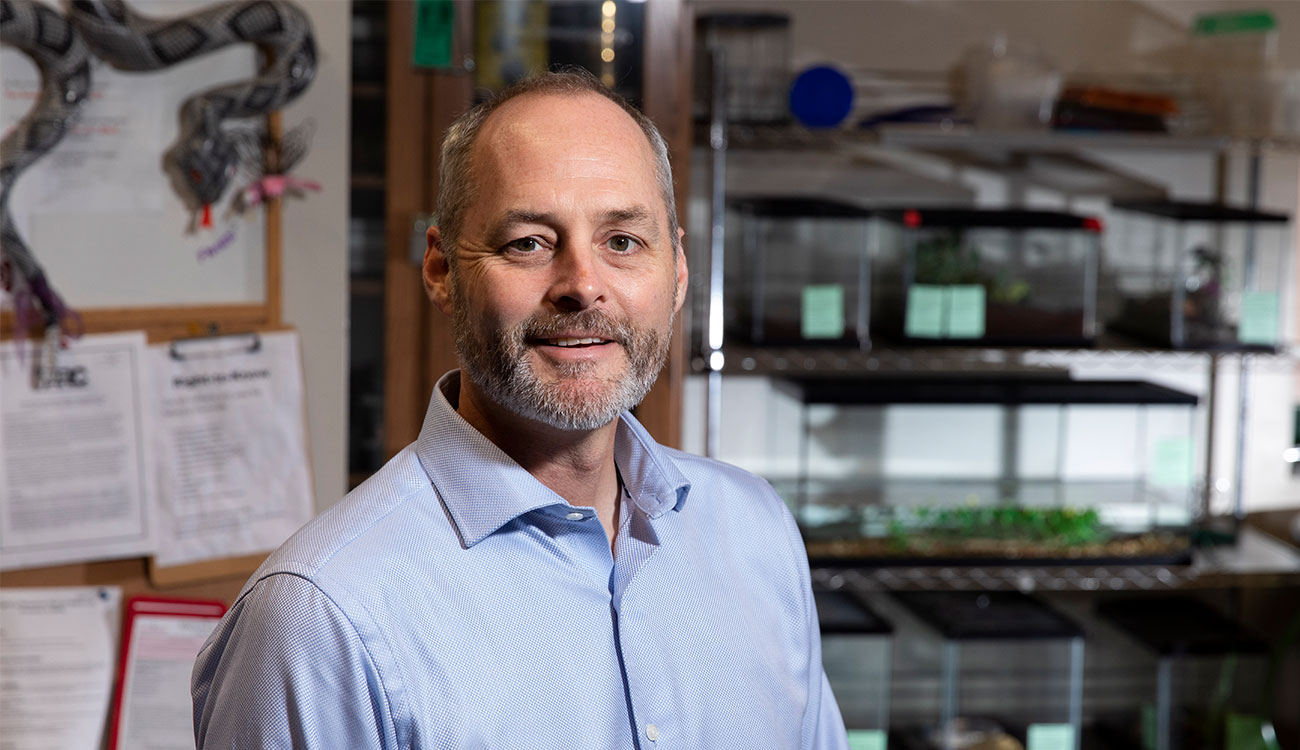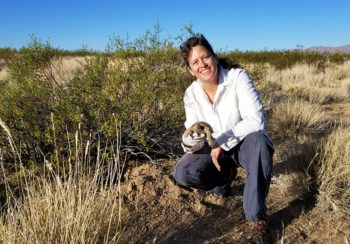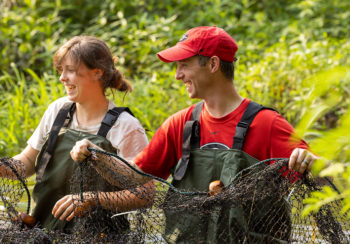Diamondback terrapins are up against a lot in Georgia. From drowning caused by commercial fishing crab pots and motor vehicles that run over nesting female turtles, to raccoons ravaging their nests and storm infrastructure getting in the way of critical paths, these semi-aquatic reptiles face their share of challenges. Many of the threats are exacerbated by human activity.
University of Georgia researcher John Maerz is using his expertise as an animal ecologist to dig into these challenges and others. He is exploring solutions and working with key stakeholders and decision-makers to help them conserve and manage this Species of Special Concern, an official designation from the U.S. Fish & Wildlife Service.
It’s a core part of his lab’s work, which specializes in ecological processes that create and sustain biodiversity.
“We want to look at the biology of the critter, and we want to look at the solutions and tools that policymakers can use for conservation,” said Maerz, the Carey Distinguished Professor of Natural Resources and a Meigs Distinguished Teaching Professor in the Warnell School of Forestry and Natural Resources. “That’s a fundamental part of what we do. We want to empower people to make informed decisions about the management and conservation of wildlife.”
His lab uses ecological principles to better understand threats to wildlife and biodiversity, and then develops management strategies to mitigate those threats. For instance, they analyzed how motor vehicles affect turtles and found that certain times of day were deadlier than others. Together with the Georgia Sea Turtle Center and the Georgia Department of Transportation, Maerz and his team came up with one possible solution to help: the installation of flashing road signs, like those at school crossings, to warn drivers to be more cautious at certain times of day.
After putting up a series of these signs, the researchers found that the signs saved about half of the turtles that would otherwise have been killed by motorized vehicles.
Maerz, also an adjunct professor in the Odum School of Ecology, hasn’t always integrated this solution-oriented angle into his work as a biologist, but once he started doing it, he was hooked.
“I realized that it’s just not enough to tell people how it works,” he said.
Wild(life) solutions
Maerz’s lab regularly partners with external groups—the Georgia Department of Natural Resources, United States Forest Service, National Park Service, the Nature Conservancy and the Georgia Sea Turtle Center, to name a few—to help them make conservation and management decisions about wildlife, biodiversity and ecological processes. The diamondback terrapin is just one of the many reptiles and amphibians this lab works with, alongside some birds and invertebrates.
He still does traditional ecological research and is especially interested in how humans impact ecosystem processes and wildlife, as well as how wildlife conservation decisions affect different ecosystems. Putting the biology to work is now a core part of his ecological research and a vital way he brings students into his research projects. He won the Lamar Dodd Creative Research Award in 2020 for his creative approach to scientific research.
“Applied biology has a big impact,” Maerz said. “This research makes for incredible student projects because they can go out and plug into these problems in different communities. And they find the work really rewarding because they have a tangible connection to why it matters.”
His most important work
The impactful research is one thing, but the number one thing Maerz said he does at UGA is train people. Making his research accessible and exciting is a critical way he’s able to engage and train students.
“If my research program doesn’t allow individuals to contribute in a way that matches what they want to do, then it wouldn’t be possible for me to train people in this science,” he said. “My research program has always been centered around finding opportunities for people to plug in.”
Maerz recalled one recent undergraduate who was interested in examining health issues in animals and launched a project looking at how increased salt exposure from rising sea levels affects juvenile turtles. It was a new angle—Maerz had been focused on adult turtles—but important, as a warming climate increases the amount of salt exposure young turtles deal with.

“It was a fantastic experiment and important for our understanding of these turtles,” Maerz said. “It was so cool that she just picked up on a question and ran with it.”
He described these microstudies as the Lego blocks that stack together to form a greater body of work. Looking at ecological problems through many different lenses enables Maerz to provide a comprehensive analysis and innovative solutions to his conservation partners.
“We’ve had lots of examples where a student’s work just plugs in beautifully to the much bigger project,” he said. “And they’re having a ball doing it.”
The allure of snakes, turtles and frogs
Maerz believes in the value of drawing people into science through the angles that excite and interest them.
That’s one of the reasons he loves working with amphibians and reptiles—they command intrigue, whether you love them or hate them.
“If I pull a snake out of my pocket, the whole room pays attention,” he said.
Maerz has been known to pull this stunt. He did it at an alumni event, when the Warnell School of Forestry and Natural Resources announced a new wildlife position focused on herpetology, the study of amphibians and reptiles. After he was done speaking, he drew a small hognose snake out of his pocket and it was soon getting passed around the room as the guests took turns holding it—or, in some cases, avoiding it.
“People were fascinated,” he said.
That’s one of the keys to engaging people in science and conservation, he said. It was an intrigue with salamanders that sucked Maerz into the field himself.
“I wandered into their world and the questions never stopped coming,” he said. “If we care about something, we pay attention to it.”






